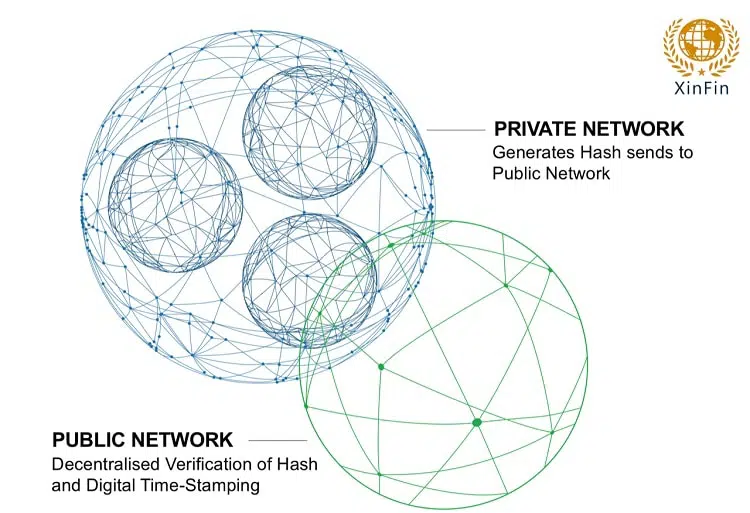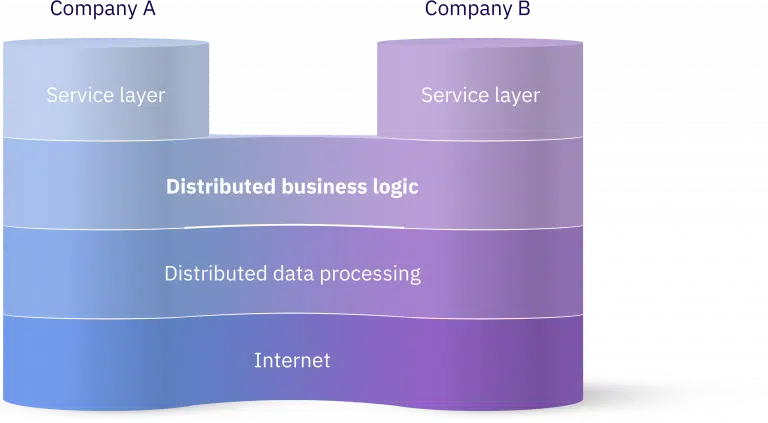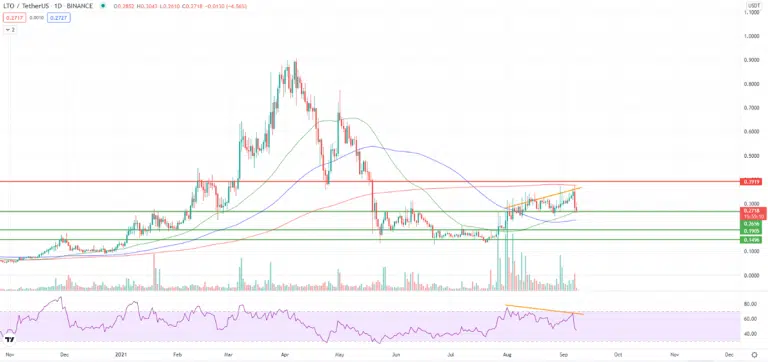What is LTO Network (LTO)?
- Introduction LTO Network (LTO)
- LTO Network’s Technology
- LTO Network Use Case
- The LTO Network Ecosystem
- LTO Network News
- LTO Price
Introduction LTO Network (LTO)
LTO Network is a hybrid blockchain platform for securing, verifying, and exchanging business information. With a combination of a private blockchain and a public blockchain, the LTO Network hybrid blockchain realizes solutions that comply with the General Data Protection Regulation (GDPR). LTO Network was originally a company (established in 2014) that helped organizations optimize their workflows.
In doing so, LTO Network was the trusted third party that managed all crucial data flows between organizations. The downside was that this form of centralized management created a “single point of failure” structure. If someone grants themselves unauthorized access, they can see all the data, modify it, or even steal it. This is when the idea to create a decentralized version of their business model and the idea for LTO blockchain was born.
LTO Network’s Technology
LTO Network’s protocol is divided into two layers, namely a private layer and a public layer. The private layer is used to share business information and the public layer is a proof of stake blockchain that confirms the transactions of the private blockchain. For the private layer to remain private the transactions themselves are not confirmed publicly however hashes of these transactions are confirmed.
By using a Merkle tree structure like Bitcoin uses, a transaction can be confirmed without it having to be made public. Nodes on the private layer ensure the data is verified and immutable and a hash of several transactions is then published on the public chain through a process called ‘anchoring’. This way companies have a safe place to collaborate in an effective and secure way.

The LTO token is the utility token that is an essential component within the LTO Network ecosystem. Its main purpose is to access all functions on the LTO Network public layer. Transaction fees on the LTO public layer can only be paid in LTO tokens. The LTO network is supported by validators and partners. These validators and partners will receive a portion of the transaction fees as staking rewards.
They secure the network by hosting nodes and are therefore rewarded. Token holders who do not host their own node can delegate tokens to a third-party node. By delegating tokens, token holders receive their rewards minus a small node fee.
LTO Network Use Case
LTO Network’s blockchain is used today for decentralized workflows that securely share business processes and anchor data such as certificates. By storing this data on the blockchain, the data is immutable and can be verified. These workflows ensure that companies and organizations can communicate more efficiently with each other.
One of the use-cases of the LTO network is the usage and verification of legal documents. Legal documents face multiple challenges such as proof of date and time, the authenticity of documents, and document verification. One of LTO Network partners’, Signrequest, has managed to sign more than one million business documents every year through their app.

LTO Network wants to go a step further in verifying this data, they recently announced. They want to do this by linking transactions on the public blockchain to a Decentralized Identifier (DID) or Verifiable Credentials (VC).
Verifiable Credentials (VC) are a digital version of our ordinary plastic identity cards, documents, or diplomas, issued to a specific issuer. Decentralized Identifier (DID) are similar but are often used for Business Identities. They are especially useful for establishing secure communication channels.
DID and VC transactions will be a new type of transaction, which ensures individuals or companies get an online identity. For example, companies that publish a certificate on the LTO Network blockchain first obtain a digital identity (DID).
This way not only the transaction can be verified but also the identity behind it. The great thing for companies is that it does not take any extra effort to create a Digital Identity. During the publication of a certificate, an account is automatically created, making the owner of the certificate recognizable.
The LTO Network Ecosystem

In the figure above you can see the diverse ecosystem, LTO has built around itself, from the Dutch Blockchain Coalition all the way up to the United Nations. LTO provides a new way to store data for everyone within the ecosystem. More organizations are expected to join soon and use the blockchain to their advantage.
LTO Network News
Ledger integration
LTO Network is now available in the Ledger App! This means that it is possible to securely store LTO tokens offline via the Ledger Live app. The official app goes makes it possible for investors to buy, stake, and mine LTO tokens via the Ledger Live app. Also, different nodes can be set up through the Ledger Live app. Great news!

LTO transactions
After a long period of increasing transactions on the LTO Network, figure 1.2 shows that a decline in transactions has taken place. The dip in the number of transactions has to do with several factors. The main reason was the acquisition of LegalThings by KATE innovations. This acquisition led to negative consequences such as a decrease in the number of transactions, therefore, leading to lower staking rewards for the validators and partners of the network.

An increase in users on the LTO network means that more transactions are made, thus increasing the rewards of a validator node. In turn, high reward rates increase the attractiveness for new investors. The correlation between the number of transactions and the number of staked tokens provides a good balance of rewards. By introducing the new transactions and identities as described above, a new group of users will arrive and grow the ecosystem.
As these new transactions will have different payment values, the relationship between transactions and rewards for validators will change. The number of transactions will not be directly linked to staking rewards as it is important to start looking at the activity behind these transactions. We will keep a close eye on these developments and how the ecosystem will adapt to these new changes.
LTO Price
LTO’s range-bound action between $0.25 to $0.37 continues as of September 8. The bears pushed the price below the monthly high of $0.37 to close at the critical support zone of $0.25, indicating the resumption of the consolidation.

The bears will try to pull the price back below the $0.25 level. If they do that, LTO could drop to the next important level at around $0.19, which has been serving as an important support line and saw repeated rebounds in the past months. Reversely, if the price bounces off the mentioned level and establishes itself above with increasing volume, it could signal that the sentiment is evolving to become positive, and the bulls will again try to test the previous resistance zone of around $0.25.
Would you like to read the full report? Our report provides an in-depth analysis of team, tokenomics, technology and more.


